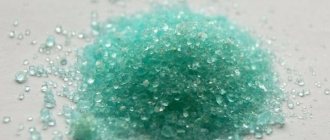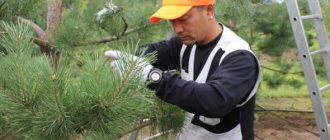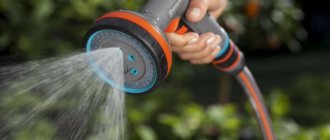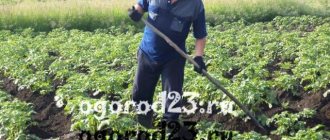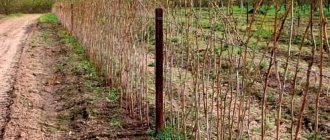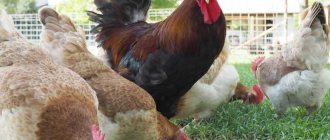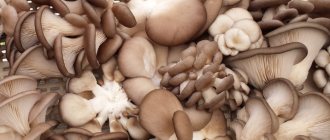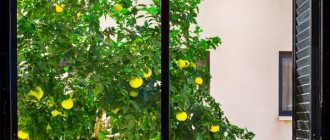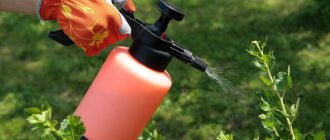Heading: Gardening Reading: 10 min Views: 273
Copper sulfate is obtained by treating metallic copper with a hot concentrate of sulfuric acid. It has a 3 class of toxic hazard, the substance is able to be absorbed through the skin. Therefore, any manipulation with his participation requires the use of protective measures in the form of latex gloves and the simplest respiratory protection. Suffice it to say that the lethal dose from consumption is from 30 to 50 ml of a 5% solution.
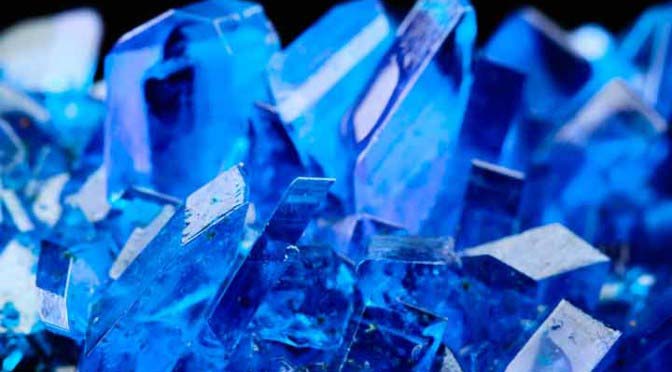
Solution concentration - depends on the purpose of processing
Copper sulfate (copper sulfate, copper sulfate) is an effective means of combating fungus, which is used in construction, medicine, veterinary medicine, and, of course, in gardening. To find out how to breed copper sulfate, let's define the goal that needs to be achieved. So, copper sulfate - use in gardening:
- For burning out, use a solution of 3-5%, apply copper sulfate against fungi and mold, disinfect the area. Dilute 300 or 500 grams in 10 liters of water. In no case should a metal container be used - the substance quickly reacts with the metal and loses its properties
- For prevention purposes, use a mixture of 0.5-1% (50-100 g per 10 l), used to treat garden plants, fight insects and bacteria
- In the form of top dressing and fertilizers -0.2-0.3% (20-30 g per 10 l), used when the leaves are curled in plants, intensive tillering without the formation of ovaries, just for the purpose of prevention
If multiple processing is required, prepare a 10% solution in advance and store it in a closed container in a dark room, if necessary, it can be brought to the desired concentration and used as needed. Such a mixture can be stored for a long time.
How to dilute copper sulfate correctly? Recall that you should avoid metal containers, give preference to enameled or glassware. The working solution is prepared as needed by mixing the required amount of warm water and copper sulfate, depending on the desired concentration. Before use, the liquid is filtered and then put into use. Mixtures are made from the substance, which are sprayed on trees and bushes.
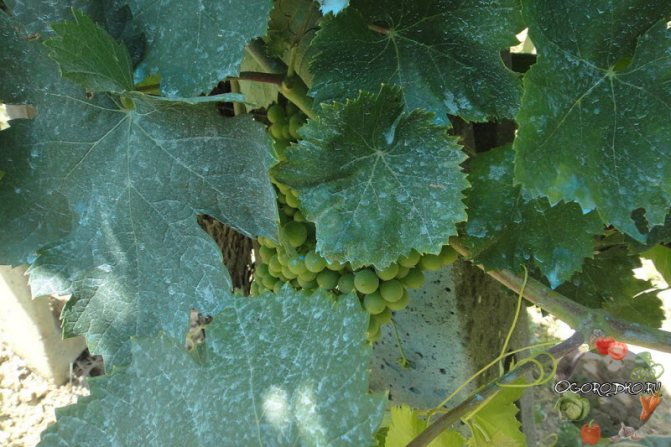

grapes processed with copper sulfate - in the photo
Bordeaux liquid it is used for disinfection of garden trees and bushes, vegetables and flowers. Prepared from copper sulfate, slaked lime and water. Bordeaux mixture is used in spring and during the growing season. The composition is prepared in small portions, since the shelf life is short, only 5 hours. After that, the liquid begins to curdle and clog the spray bottle.
Burgundy mix - a heavier analogue of Bordeaux liquid and, in order not to burn the plant, a 1% solution is used in the garden. Scope - the plant, its leaves and trunk are disinfected, the roots of seedlings are processed before planting, they are used for dressing potato tubers before planting. Burgundy blend envelops leaves and stems, protecting the plant from fungus, mold and parasites, made from blue stone, soda and water.
Protective measures
PPE at the time of treatment of the site with this drug are required.When spraying garden areas, remove pets, children and persons not involved in the work performed from the garden.
After using the solution, its residues should not be poured into ponds, lakes, rivers with animals. It is also unacceptable to dispose of the solution by draining into the drain.
In case of accidental ingestion of a substance in any of its forms in the digestive tract, you urgently need to consume 2-3 raw eggs or up to half a liter of milk. You cannot drink water, even with potassium permanganate, to induce vomiting - this will only aggravate the effect of the poison!
Dilution of solutions
Crystals of this substance are not volatile, evaporation of molecules from their surface does not occur, therefore, dissolving it in water, as a precaution against its adverse effects on the body, you can choose disposable plastic gloves.
It is divorced in any dish, except for those made of metals (stainless steel is also not good). The dishes used at least once for breeding vitriol should be marked so that they can be used only for this purpose in the future, since the molecules of the substance are deeply embedded in the structure of any surfaces.
Copper sulfate application in gardening in spring
Copper sulfate - such a remedy can be used everywhere in the country, because it is an excellent fighter against mold and fungus, which is why it is necessary to protect trees, bushes, vegetables and soil in the spring, until the spores have penetrated into the cells of the inhabitants of the garden and multiplied. Well, in the fall, processing the garden with copper sulfate is the final stage before wintering. Before spraying, trees and bushes must be pruned, cleared of lichens and cracks in the trunks should be repaired. The very first treatment is the most important!
For spraying apples, pears, peaches, cherries, cherries, plums, currants and gooseberries, for disinfection purposes, a 1% solution of copper sulfate (10 grams per liter of water) is used until the first leaves appear. In different climatic zones, this period begins in different ways, so you should rely on the average daily temperature, which should not be lower than + 5 ° С.
Seedling roots before planting processed with 1% mixture in this order - the roots are dipped into the mixture for a minute, then thoroughly washed with running water or (in its absence), washed in three waters, soaking in each for 2-3 minutes.
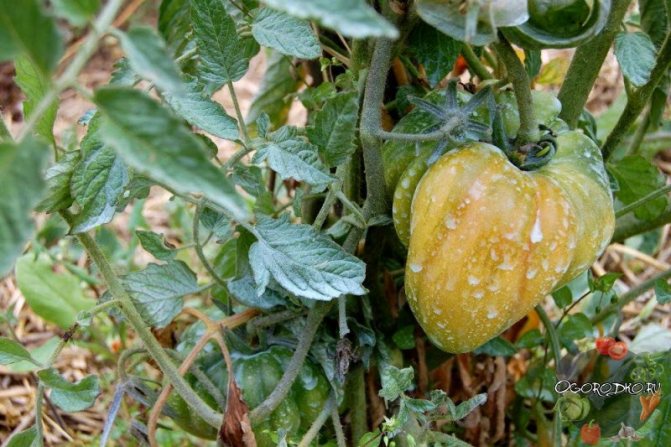

processing a tomato with copper sulphate - in the photo
For getting earlier and healthier seedlings, seeds of cucumbers, tomatoes and other crops are soaked in a 2% mixture before planting. You can save potato tubers from late blight by spraying them with 2% fungicide before planting.
Spring processing of grapes copper sulfate is necessary for the development of healthy and large berries, therefore the procedure is carried out in three passes - before the buds appear, before flowering and after flowering. For spraying grapes, 300 grams of copper sulfate, 300 grams of quicklime per 10 liters of water are bred. The procedure starts from the root and ends with the crown.
For strawberries in the spring, copper sulfate is used in the fight against powdery mildew, scab, rot, and gardening experts advise in such cases to breed copper sulfate with lime in a 1: 1 ratio.
Introducing copper sulfate into the soil for disinfection, remember - everything needs a measure, the substance can accumulate in the soil, which can lead to an overabundance of copper, it also affects the flora, poses a threat to worms. For this reason, as a disinfectant, copper sulfate is applied no more than 1 time in 4-5 years, and in the first year the earth should rest.
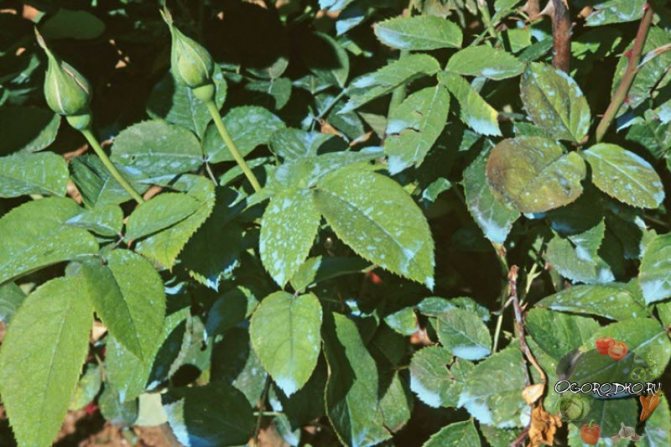

Roses in the garden are processed with copper sulfate - in the photo
For disinfection process the loose soil a month before sowing with 2-5% of the composition of the chemical, consuming 10 liters of the mixture per 1 sq. meter of earth. Fertilize the soil in early spring or autumn after the foliage has fallen, per 1 sq. m of beds by mixing 1 g of the drug with the ground.
Copper sulfate is effective against mold on trees and shrubs, fungus, putrefactive processes, for this, treat the garden with 1% concentrate until the first buds set.
Other areas of application
Copper sulfate is used in many areas:
- food additive E519 (paint stabilizer and preservative);
- disinfection of livestock buildings;
- obtaining zinc, cobalt, lead;
- production of electroplating baths, copper cathodes, mirrors and glass, electric batteries;
- production of acetate fabric, leather pigment, dyes.
To identify zinc, manganese, magnesium in steel and aluminum alloys, a solution of copper sulfate is often used at points of purchase of non-ferrous scrap: when the product is applied, the surface takes on a reddish tint.
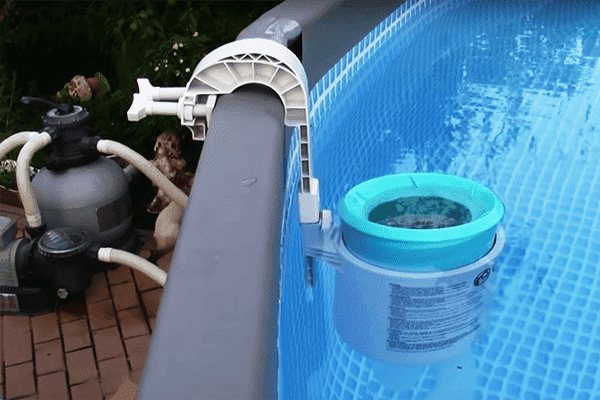

Cleaning of swimming pools and artificial reservoirs
Copper sulfate is used to disinfect water and prevent the appearance of algae. With him, its turbidity and greening is not scary.
For water purification:
- Add table salt and copper sulfate to the mixers located in the water supply pipes at the rate of 2.7 g and 0.9 g per 1 cube of water.
- Do not use the pool for the next 24 hours.
After 24 hours, the water will become clear, and the restrictions on the use of the reservoir will be lifted. Such cleaning does not harm human health. Of course, provided that the dosages are respected.
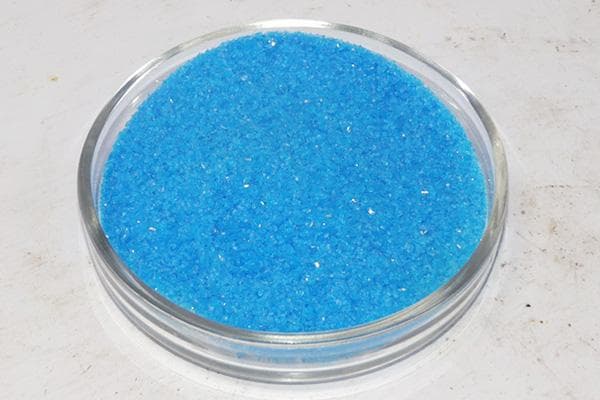

ethnoscience
At the risk of poisoning, when an urgent need to induce vomiting, the people are preparing a remedy with copper sulfate (0.5 g per 1 liter of water). They also try to treat a variety of diseases:
- abscesses and inflammations on the skin;
- fungal diseases;
- diseases of the genitourinary sphere;
- polyarthritis;
- radiculitis;
- cancer.
With a fungus on the feet, baths are made. In 1 liter of warm water, carefully dissolve 1 teaspoon of copper sulfate. Then the legs are lowered into the solution and kept for 30-40 minutes. After treatment, take a regular bath and lubricate the skin with a moisturizer.
Official medicine is skeptical about the healing effect of copper sulfate and warns that its use can harm health and even cause death.
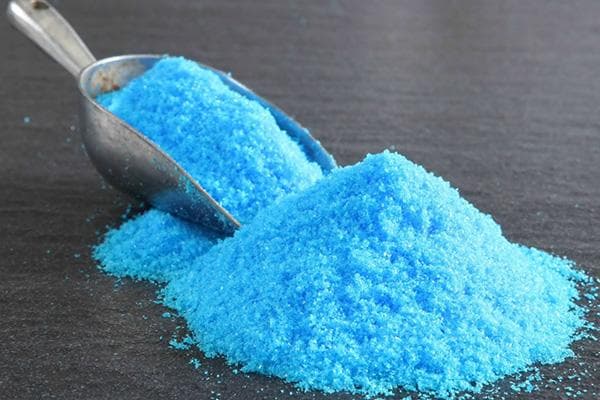

Using vitriol in the garden in summer
At the stage of fruit formation, trees also need protection and care. A small instruction on how to dilute copper sulfate for treating trees in summer:
- The first enemy of apple, apricot and pear is aphid, to protect the tree, dilute a 0.5-1% mixture and spray the trees
- To protect against the beetle, prepare a solution of 1-2% and process the fruit trees
- The same dosage is suitable for preserving raspberry and currant bushes from aphids and the appearance of various spots on the foliage.
- For grapes, copper sulfate must be diluted in a weaker proportion - 2-5 grams per 10 liters, such a concentrate will not allow the foliage to be scorched, but will relieve rot, anthracnose and other diseases. The treatment is repeated after three weeks.
Spraying can be done 2-3 weeks before harvest. When working on your garden, keep safety in mind by wearing rubber gloves, shoes and a respirator.
How to cook?
Instructions for preparing a solution of copper sulfate for processing a garden consists of two stages:
- Preparation of mother liquor from copper sulfate. To prepare the mother liquor of copper sulfate, it is imperative to use a separate dish, from which people and animals will not drink or eat later. For this, 100 grams of copper sulfate is diluted with a liter of water. Fill the powder granules with water (warm, 50-60 degrees, since copper sulfate is not best soluble in water). Stir until powder dissolves. As a result, a 10% solution of copper sulfate will be obtained, which is not suitable for direct use in horticulture. Further, the mother liquor is to be diluted with water to a vitriol concentration of 1-1.5%.
- Dilution of the mother liquor to the required concentration of the working substance. To do this, pour the mother liquor of copper sulfate into a large container and add water, cold, to the desired concentration (7-9 liters). If possible, it is better to process the plants using a special spray bottle, although in the old fashioned way you can spray the plants with a broom.
Processing the garden with copper sulfate in the fall
Copper sulfate is used in gardening in the fall to prepare for winter, while the dosage for various activities is different:
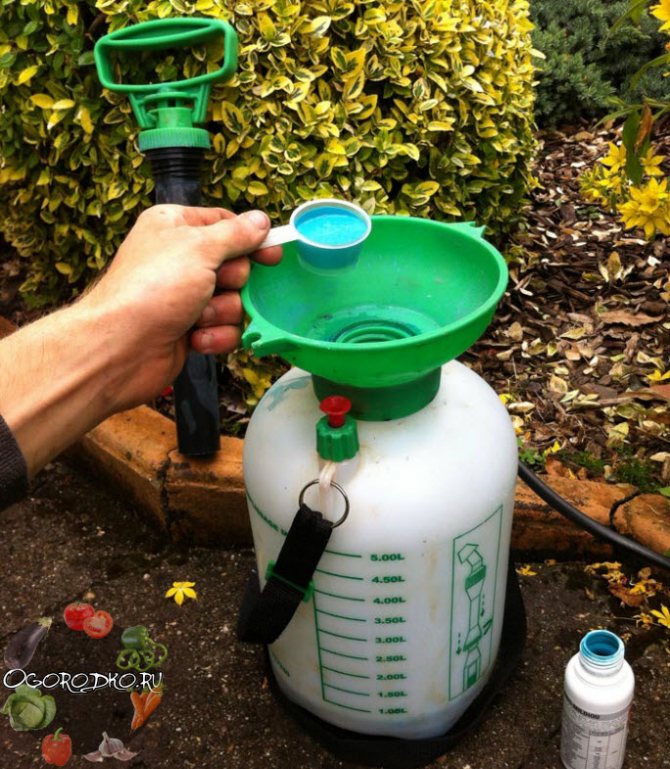

preparation of a mixture of copper sulfate - in the photo
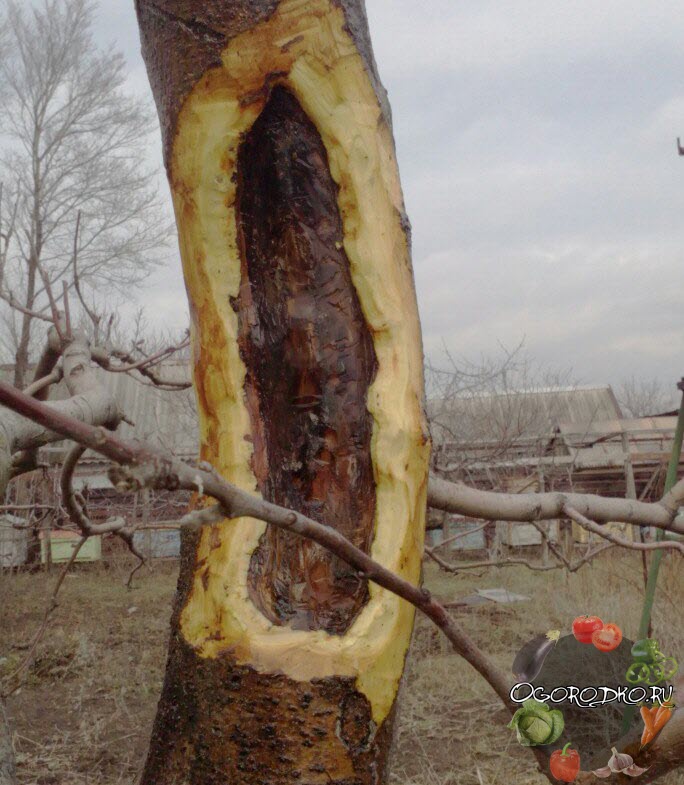

processing trees with copper sulfate - in the photo
- For the treatment of grapes with copper sulfate, a 5% mixture is bred in the fall and the vine is treated after the leaves fall, copper sulfate is also used when grapes are transplanted - the roots are dipped in a 1% solution before planting
- When the strawberries are harvested, feed the berry with slurry with the addition of blue stone, treat the plant with a mixture of 3 g per 10 liters of water and cover for the winter. Strawberries after harvest also require maintenance
- During autumn digging, you can fertilize the ground by sprinkling copper sulfate into the ground (1 g per sq. M.)
- Shelter roses for the winter involves spraying with a 3% mixture
For effective care, choose a calm, dry weather, the optimal temperature for gardening in autumn is +5 ° ... + 7 ° C. Copper sulphate has various uses in horticulture and takes pride of place due to its effectiveness and availability. Use the blue stone wisely and enjoy a healthy, bountiful harvest!
Toxicity and Precautions
Copper sulfate is a poison. It has a 4th class of toxicity and is defined as a low-hazard substance for humans, plants, animals (but for fish it is fatal even in small doses). It does not burn on contact with the skin. Leaves a chemical burn on the mucous membranes. If swallowed and inhaled, the aerosol cloud causes severe poisoning. Negative reactions develop at a dosage of 0.5 g of vitriol and above. If 45–125 g of powder is swallowed, it is fatal.
When processing, follow 5 rules:
- Do not use food utensils to mix the solution.
- When applying the product with an aerosol, put on goggles for protection, rubber gloves, a cotton-gauze bandage (respirator), and a hat.
- Treat in the absence of children and animals.
- When finished, rinse your mouth with water and wash your hands with soap and water.
- Do not throw away the packaging and do not pour the remains of the solution into the sewer, natural water bodies, on the surface of the soil.
So, copper sulfate is widely used. It is in demand in agriculture, construction, industry and many other areas. The undoubted advantage of the product is an affordable price with high efficiency. The disadvantages include relative toxicity. But if you take precautions and observe the dosages, the use of vitriol will only benefit.
Work safety
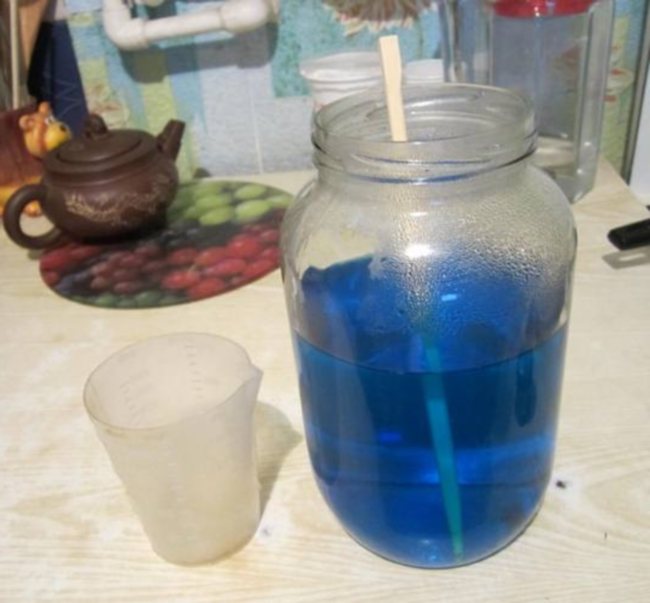

When working with the drug, you must clearly adhere to the safety rules:
- Wear rubber gloves, a protective mask with goggles.
- After work - wash your face, wash your hands, rinse your mouth.
- Avoid contact with skin, mucous membranes.
- Work only at air temperatures up to 30 degrees.
In case of contact with the skin, mucous membranes - quickly rinse the area with running water, seek medical help. In case of poisoning, it is forbidden to use castor oil to induce a gag reflex or cleanse the intestines.
Copper sulfate dissolution technology
Copper crystals are dissolved in boiling water (from 50 about C). Experts say that it is undesirable to use a special chemical kit consisting of thin-walled dishes to carry out the reaction.
The solution has a strong electrolytic property, therefore, if the vessel is damaged, a serious accident can occur.
It is better to dissolve vitriol in a water bath, and store the finished cooled liquid in PET or glass containers for up to 12-18 months from the date of manufacture, placing the container in a dark place.
Now you know how to breed copper sulfate for trees and other crops.
Description and general use of the drug
This blue fine crystalline powder is also called copper sulfate. The active ingredient is copper sulfate - 980 grams per kilogram of the drug.
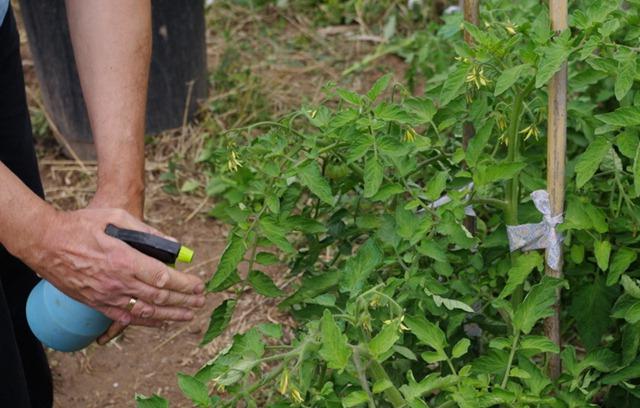

It dissolves well in warm water, when it dries, it loses its color, the granules become almost transparent, grayish, but in a humid environment they return to their primary color.
When heated, it becomes hazardous to health due to the evaporation of toxic gases. According to the hazard classification, the substance has been assigned the third degree, if necessary, seek medical advice from a toxicologist or other competent specialists.
Using only copper-containing fungicides, you can lose the quality of the crop, the development of the culture will slow down, and chlorosis begins - this is facilitated by the accumulation of the element in soil, water, plants. Gardeners alternate the use of vitriol: they are treated with iron ones in the fall, and in the spring and summer - with copper ones.
In addition to gardening and agriculture, the drug is used in medicine, food industry. (preservative "E 519"), animal husbandry (added to compound feed), metallurgical and chemical industries, construction (eliminate mold, impregnate wood from decay, for fire resistance).

